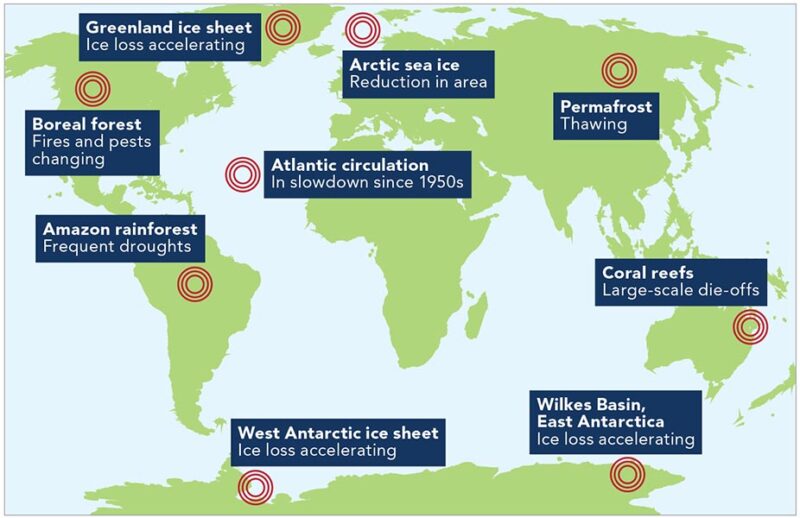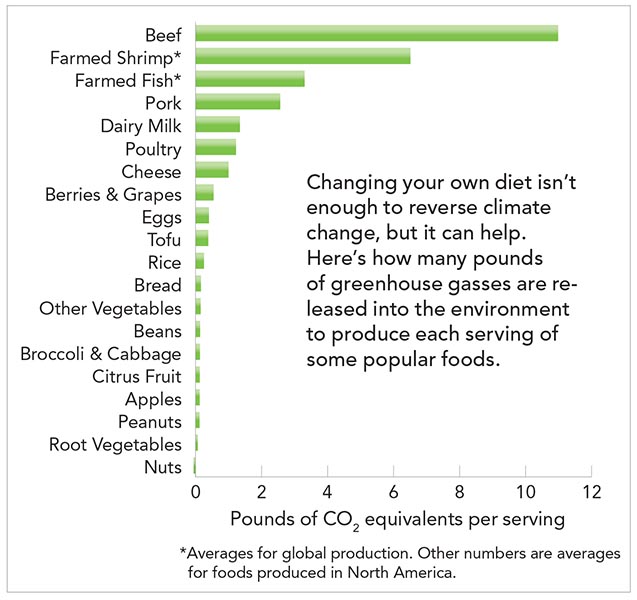How plant-heavy diets can help the planet's health

marrakeshh - stock.adobe.com.
“Wildfires at all-time high. Arctic sea ice remains at record lows,” says the U.S. Environmental Protection Agency.
“The Earth’s climate is changing.” The change shows up in virtually every indicator that the EPA and the National Climate Assessment track, from rising global greenhouse gas emissions, sea levels, and air and ocean temperatures to more heatwaves, heavy rains, persistent drought in the Southwest, and flooding on the coasts and in Northeast, Pacific Northwest, and Midwest rivers.
Time is running out
“The climate crisis has arrived and is accelerating faster than most scientists expected,” said a “climate emergency” warning from 11,000 scientists in 153 countries in January.
“Especially worrisome are potential irreversible climate tipping points... that could lead to a catastrophic ‘hothouse Earth,’ well beyond the control of humans.”
Among the events that could trigger a tipping point: melting Antarctic or Greenland ice sheets, loss of Arctic sea ice, or drought in the Amazon rainforest.

What we eat matters
“Business as usual in the food system is not an option,” says Nicole Tichenor Blackstone, assistant professor of agriculture, food, and environment at Tufts University.
Eating more plants and fewer animal foods can help.
“Globally, livestock systems are responsible for around 11 to 15 percent of greenhouse gas emissions, they occupy 80 percent of global agricultural land, and they use around 30 percent of agricultural water,” notes Blackstone.
Beef takes the greatest toll
“The differences are not small,” says Walter Willett, professor of epidemiology and nutrition at the Harvard T.H. Chan School of Public Health. “Beef produces far more greenhouse gas per serving than plant proteins like soy and nuts.”
Why? “Beef cattle have a much higher carbon footprint than non-ruminant animals like pork or poultry or plant-based proteins in part because cows consume grass,” explains Blackstone.
Digesting that grass makes cattle expel methane from both ends of their GI tracts (mostly from burps).
And “methane is a greenhouse gas that’s 25 to 28 times more powerful than carbon dioxide,” says Blackstone.

Greenhouse gasses aren’t the only problem. Growing enormous quantities of grain to feed livestock—and the animals’ manure—can pollute water with nitrogen and phosphorus.
“Nitrogen and phosphorus have consequences, like the algal blooms in Lake Erie and the Gulf of Mexico,” says Blackstone.
What’s more, “plant-based proteins tend to use less water, which matters in places where water is scarce.” (Exception: In North America, almonds require about as much water per serving as beef.)
What about plant-based “meats”?
“Life-cycle assessments commissioned by Beyond Meat and Impossible Foods show roughly 90 percent lower greenhouse gas emissions, 90 percent less water use, and 90 percent less land use compared to beef,” says Blackstone.
“If you eat plant-based meats in place of pork, the reductions are a little less dramatic.”
Overall, red meat has ripple effects throughout the environment.
“We’re cutting down forests and plowing under prairies to produce animal foods that are destroying our biodiversity and interfering with water systems,” explains Willett.
“We’re growing vast amounts of grain, much of it to feed to animals, not people. And the fertilizer that’s being used to grow that grain is poisoning our streams and oceans.”
“This bizarre food system is bad for the planet and bad for people.”
The consequences
Worst of all, our children and grandchildren will face the consequences.
“When we talk about environmental sustainability, we’re not only talking about our ability to live now with clean water, clean air, et cetera,” says Blackstone.
“We’re talking about avoiding catastrophic warming and, in some cases, total ecosystem collapse.”
“If you don’t do it for today, do it for your kids and grandkids. The choices we make can build a more sustainable future for them.”
Want more reasons to fill your plate with mostly plants?
A plant-heavy diet can also help your heart, sustain your brain, cut your risk of cancer, and keep antibiotics working.
Photo: marrakeshh/stock.adobe.com. Graph source: Science 360: 987, 2018. Illustration: Adapted from Nature 575: 592, 2019.




